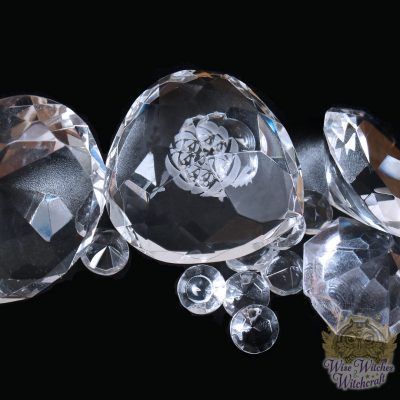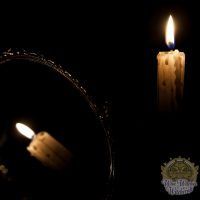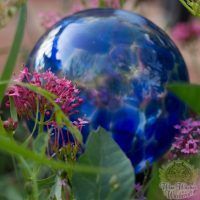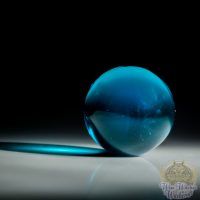Mirror Magic: Getting Started with Scrying
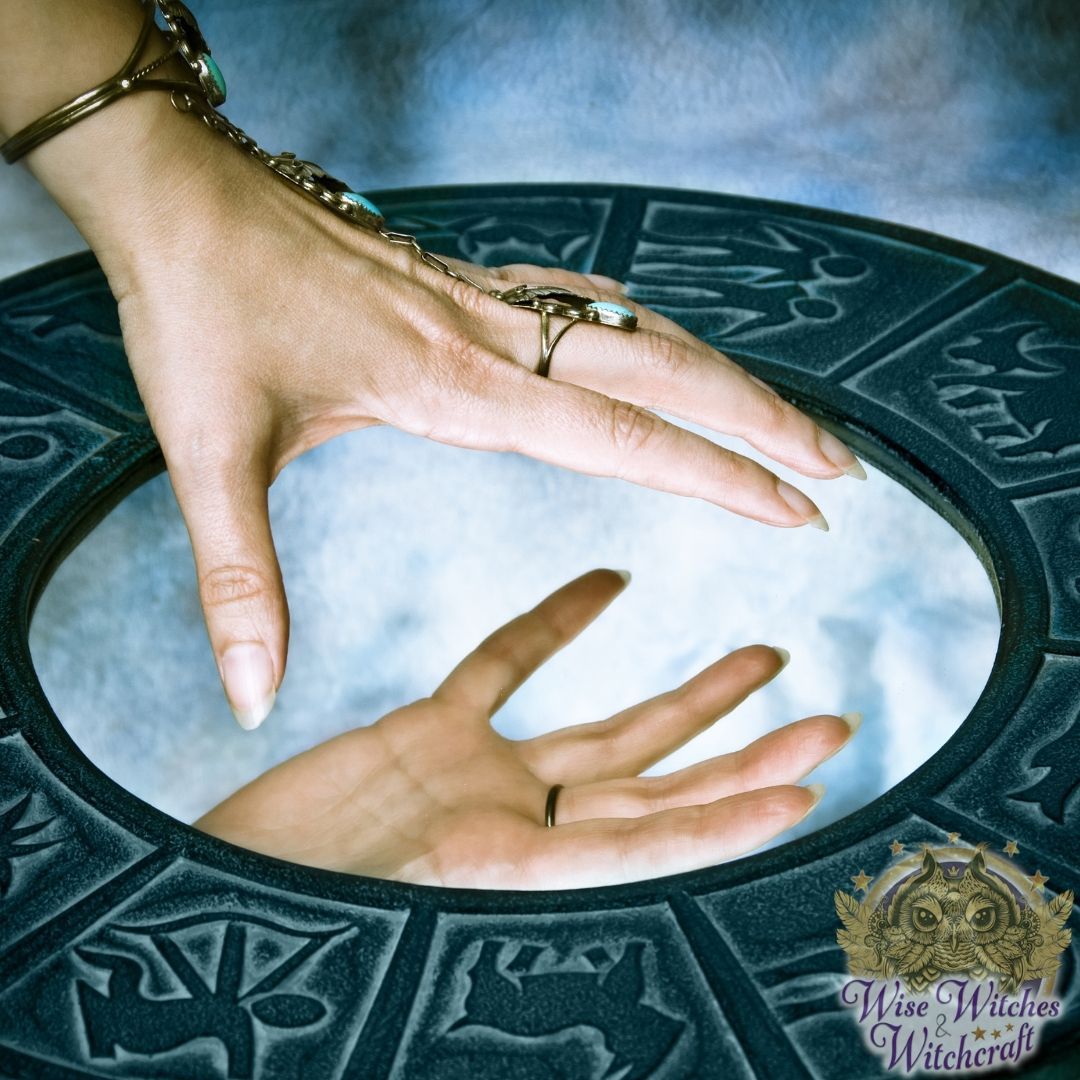
“My mother says I must not pass too near that glass; she is afraid that I will see a little witch that looks like me.”
-Sarah Morgan Bryant Piatt
“Mirror, mirror, on the wall, who is the fairest of them all?” In Snow White, the wicked witch stares into her magick mirror asking this question. The mirror then swirls with color and light, revealing the face of the fair Snow White. We find a similar bit of mirror lore in the Arabian Nights, where a maiden’s purity was measured by the way in which her image appeared in a magick mirror. If it was clear, her heart and body were declared chaste.
The Magickal Art of Mirror Scrying: Gazing into the Looking Glass
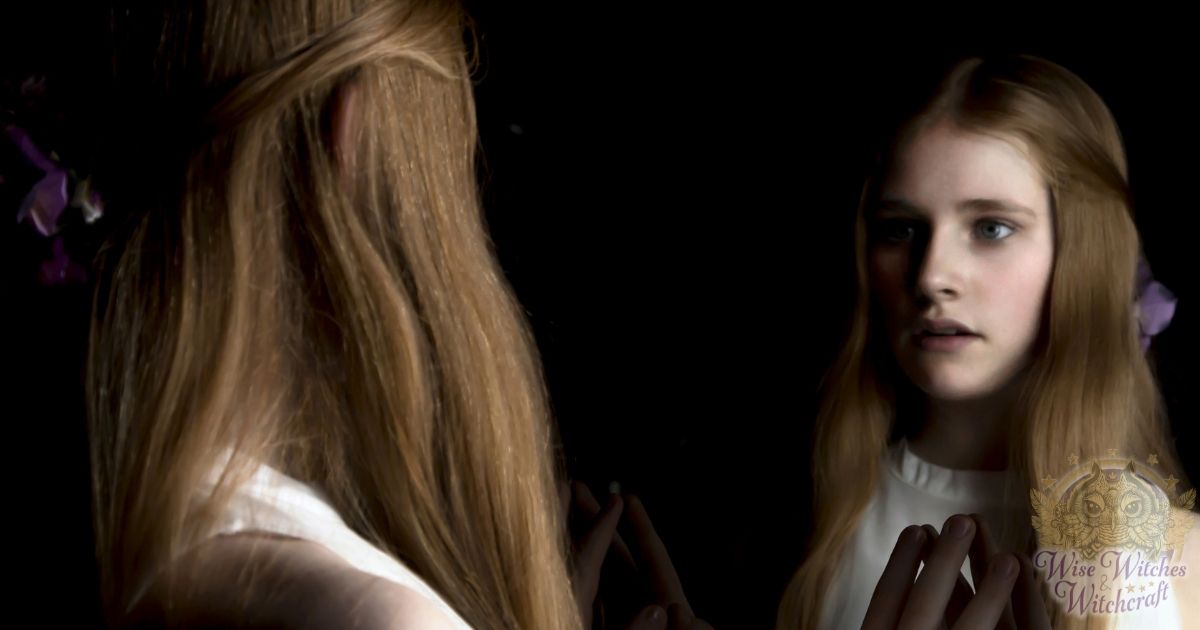
While the first fairy tale portrays the witch negatively, and the second appears to use the mirror for manipulating a person’s devotion. Yet both provide a peek into an ancient magickal art: Mirror scrying. For thousands of years and in a variety of cultural settings, humans have looked into mirrored surfaces hoping to find truth from the past, hidden matters in the present and maybe even a glimpse into the elusive future.
The Magic Mirror Charm
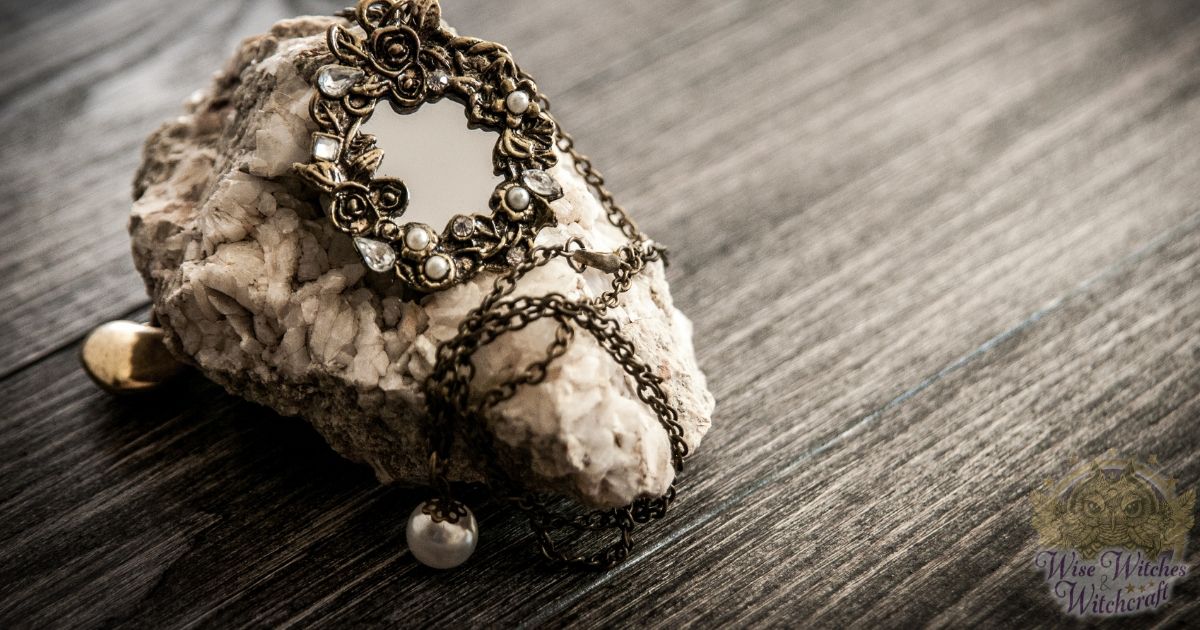
Mirrors were also used metaphysically as charms, amulets, spell components, and a meditative focus, just to name a few possibilities. There are plenty of good illustrations of these applications. For example, in both Europe and the United States as late as the Victorian era, covering a mirror protected the home from a visit from a recently deceased relative’s spirit (amuletic value) and turning a mirror outward was said to turn away the evil eye (a kind of spell).
More commonly, people everywhere look in the mirror to primp and hone, admire and adorn the image of self reflected there. This duality of function is not unusual. In fact, the more commonplace an item, the more likely it has some use in magick. After all, our ancestors were very pragmatic: it’s handy, so use it. Also, the powerful symbolism of the mirror reflecting the true self was not lost on the ancients. Anything with such representative value and availability was bound to show up in the clever and ever resourceful witch’s kit.
How is a Mirror Made?
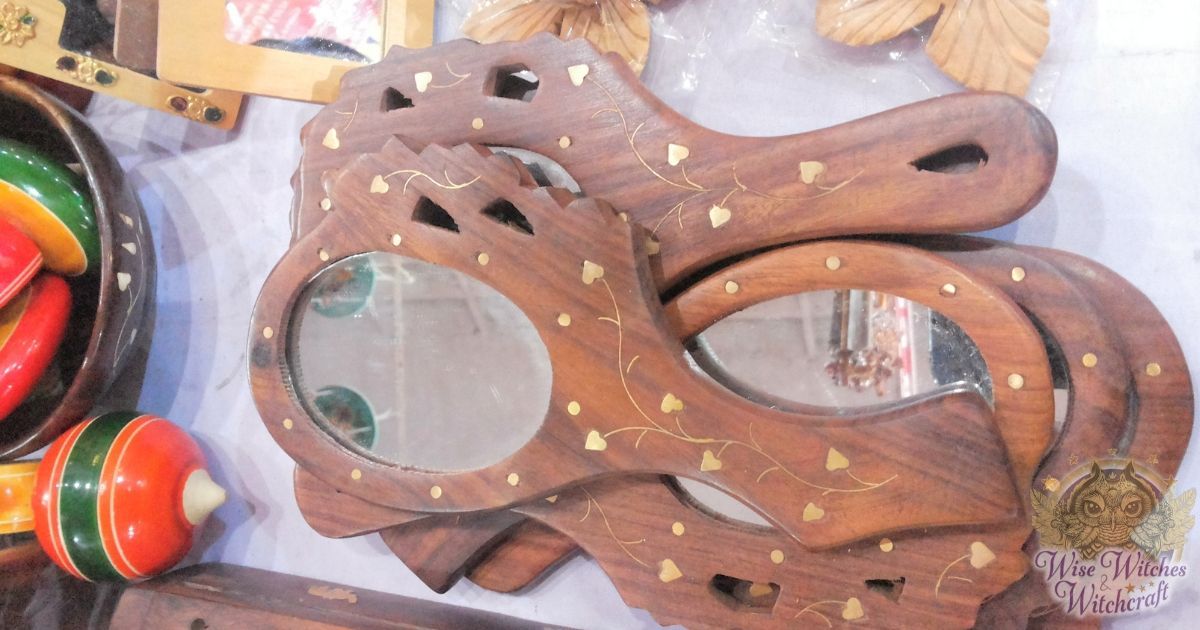
“The face is the mirror of the mind, and eyes without speaking confess the secrets of the heart.”
-Saint Jerome
In any story, it’s always good to start at the beginning. While it’s tempting to skip ahead, not having all the details from the first few pages dampens the overall effect of any book and leaves you scratching your head. Similarly, in magick, it’s good to have reliable information and get to know our potential tools and techniques inside and out. In this case, our “first page” begins with an examination of some basic mirror facts.
Mirrors are typically made of plate glass. One side of the glass is coated with a metal or other reflective preparation. Between the two surfaces is what’s called the “mirror line.” While highly polished metals and even the surface of water can act as reflective surfaces, the glass and metal combination has been the most refined one, and thus most widely sought after for its clarity.
Types of Mirrors for Divination
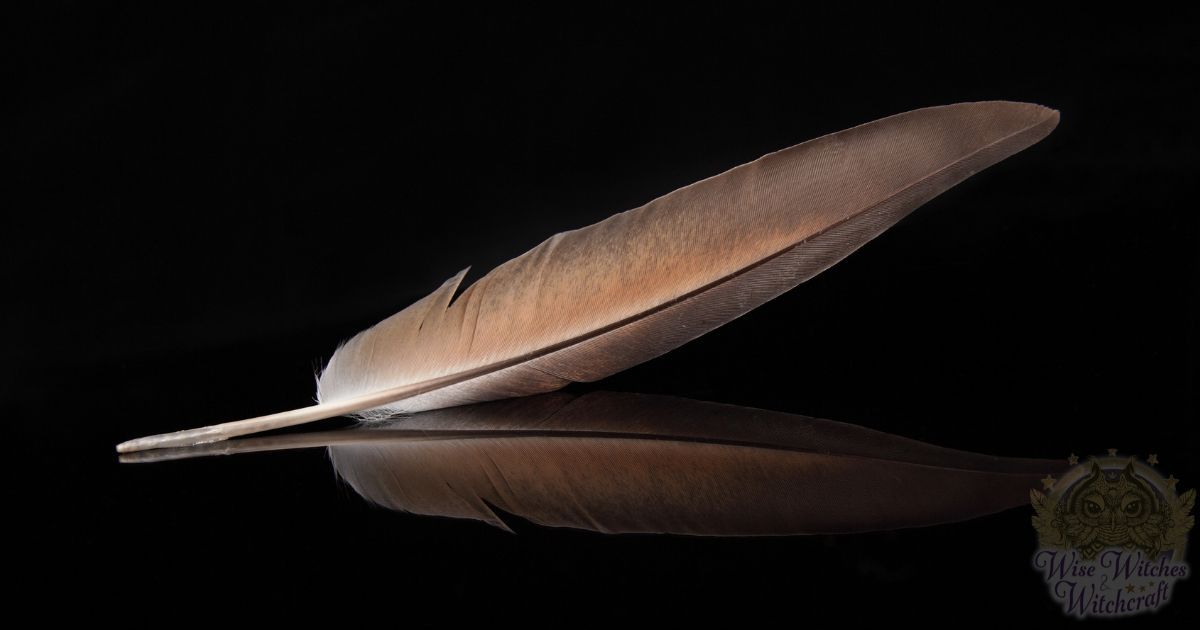
Three types of mirrors are commonly used in the world:
Plane: This has a flat surface so the rays of light that reflect off it change very little from the original character (meaning you get a more precise result). The image in the mirror will appear to be the same distance both in front of and behind, the mirror’s surface.
Convex: This mirror’s surface bulges toward you, making the image smaller than reality.
Concave: The word cave gives us a clue to this mirror’s shape, which is akin to the inside of a hollow ball. How the image appears in a concave mirror depends on where an item is in relation to the curvature, but it will always be inverted.
Concave and convex mirrors can be used in magick if you wish, but be sure to consider the symbolism in both the smaller image and the inverted image. For example, I might use the convex mirror for diminishing negativity and the concave one for shifting energy (turning it upside down).
Mirror Gazing History
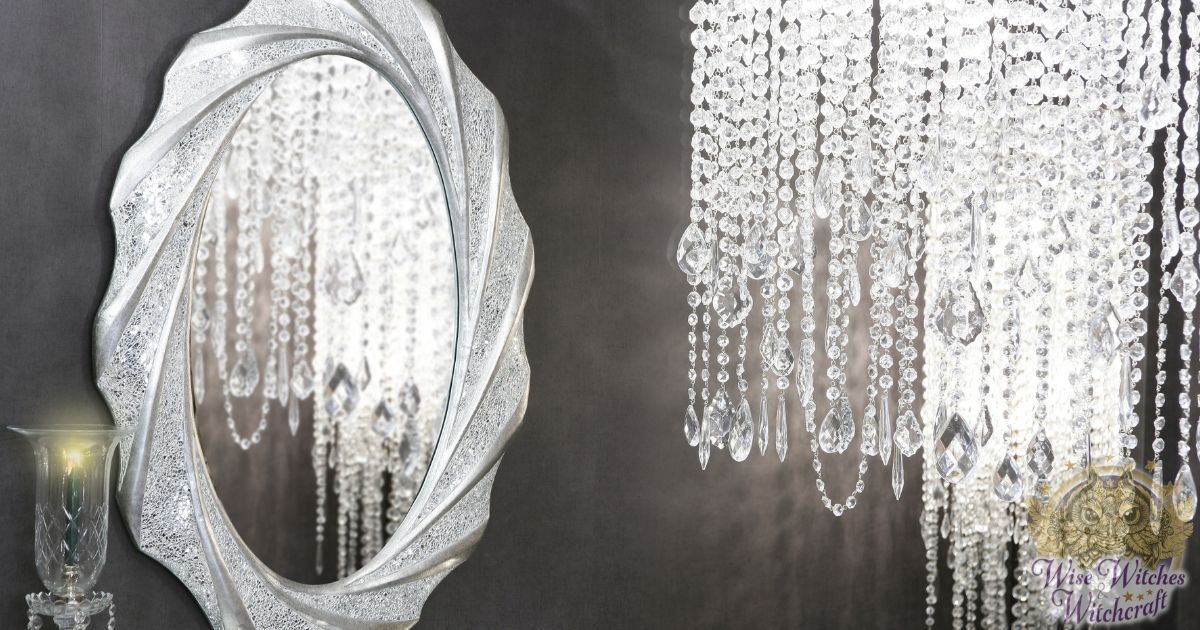
The first mirrors were simply surfaces that reflected images back to those peering in. Nature provided ready sources such as wells, ponds, puddles after a rainstorm, and sometimes the surface of a shiny stone or crystal. As human kind’s technology and skills improved, the surface of a blade became a mirror, as did pieces of armor and any other type of polished metal with a relatively flat surface. Although crude at best, people carried highly polished disks of bronze, silver, personal magical mirrors by those with the means to afford them. Here are some of the more interesting highlights in the mirror’s history:
106-48 B.C.E.: Silver mirrors are first made in the period of Pompey the Great. They quickly become more popular than bronze ones.
1st century C.E.: Mirrors large enough to reflect the whole human body appear along with the increasing popularity of hand mirrors among the Celts, followed by the Romans, and in most of Europe in the Middle Ages. The most prevalent mirror is made of silver or polished bronze.
The 4th Century: Iamblichus, a Neoplatonist, describes various scrying methods in De Mysteriis Aegyptiorum, a work later used by Nostradamus.
437-553 C.E.: St. Remigius, archbishop of Reims, practices scrying.
The 7th Century: Silver mirrors are now almost completely replaced by glass ones.
The 12th and 13th Centuries: Mirrors are backed with metallics.
The 14th-15th Centuries: Nuremberg and Venice have established strong reputations for outstanding mirror production. At the same time in Germany, Trithemius, abbot of a monastery at Spannheim, writes definitive occult works with scrying instructions, including praying over a crystal ball for visions.
1519-1589: Catherine de Medici uses a special glass to study the future. This was in the Louvre until the late 1600’s, when it disappeared.
The 16th Century: Mirrors are made of glass in large quantities. In Venice; Nostradamus writes about seeing visions in the spirits of fire (a type of scrying).
The 17th Century: Mirror production stretches to London and Paris for high-quality, expensive mirrors; John Dee uses mirrors for scrying in Queen Elizabeth’s court; Count Cagliostro uses scrying to make various historical predictions.
1800s: An early member of the Golden Dawn, Frederick Hockley, conducts various scrying experiments.
1897: Miss Davy de Cusse attaches a mirror to the front of her car for the first rearview mirror.
1903: The transparent mirror (a two-way mirror) is officially patented in Ohio by Emil Bloch.
20th Century: Aluminum is introduced as a reflecting material because of efficiency and oxidation resistance.
From the seventeenth century onward, mirrors became more and more important for decoration. Frames were often made from ivory, ebony, silver, and tortoiseshell and then decorated further with all types of beadwork, woods, and carvings.
By the eighteenth century, painted frames became popular along with accompanying candlesticks (how very pagan). In the nineteenth century, the skills for making mirrors had improved to the point where freestanding mirrors were completely possible at a much cheaper cost. With both availability and affordability firmly in place, mirrors quickly became among the most common of household implements and remain so to this day.
Magic Mirrors in Myth and Legend
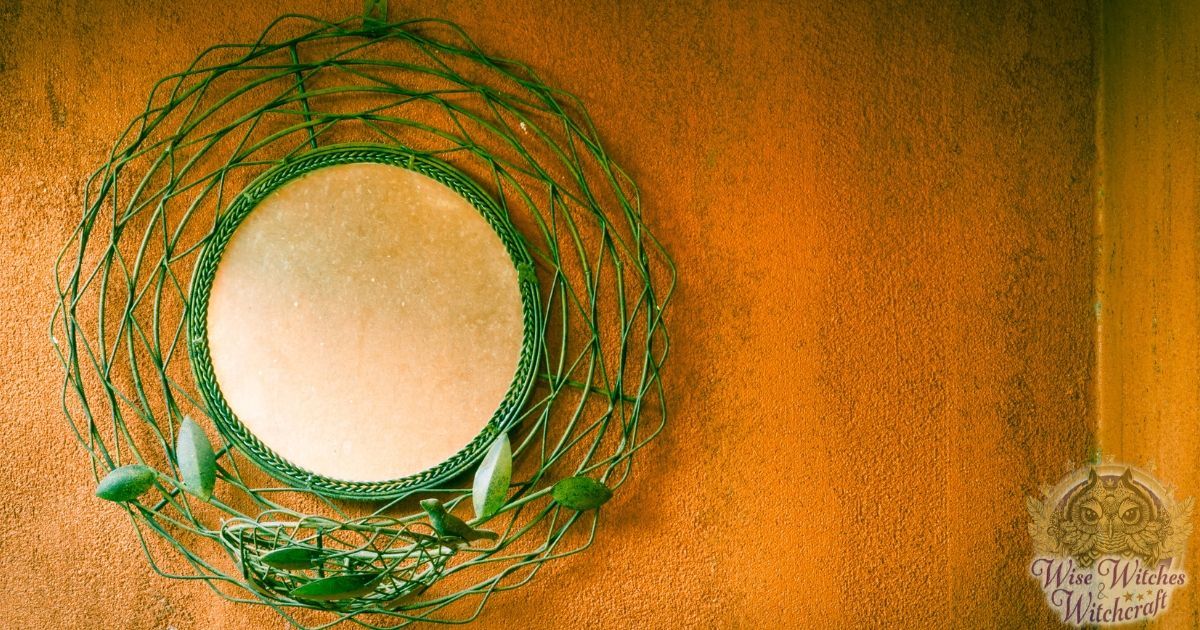
One of the most commonly known myths centering around a person’s reflection comes to us from Greece. It begins with a youth named Narcissus who was loved greatly by the nymphs. Sadly, Narcissus was cruel, and he rejected them all. In response, the nymphs prayed to the Gods that Narcissus would someday come to understand how it felt to be spurned.
It was not long before the Gods had a chance to respond to the nymphs’ prayer. Narcissus came upon a woodland fountain where he saw an image of incredible beauty. Thinking it to be a water spirit, he fell madly in love. No matter how much he yearned, there was no response from the pond, until at last he pined away and died, leaving nothing but a purple flower where his body should have been.
On the flip side of Narcissus and his self-love, we find Perseus, the son of Zeus. This young hero traveled to Libya to kill the Gorgon Medusa. To help him in his quest, he was given a finely polished shield by Hermes, which he used as a protective mirror to remain free from the gorgon’s stony gaze. Once he’d captured Medusa’s head, he cleverly used the magic that remained to defeat the titan Atlas, who tried to take the golden apples from Hesperides. The shield protected Perseus from being turned to stone, and, according to the story, all that now remains of the titan is the range of mountains known as Atlas.
The Dark Side of the Magic Mirror
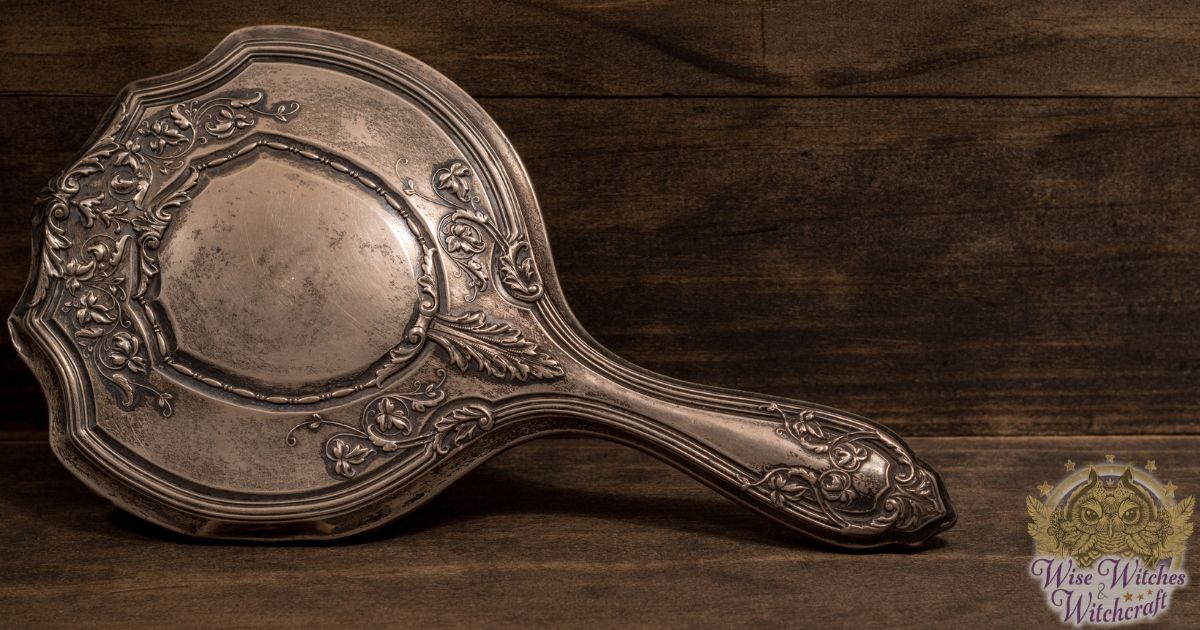
Not all mirror folklore is quite so positive. In Jewish tradition, mirrors are often called the Cave of Lilith. As the story goes, Lilith was the first wife of Adam. She was banished from the Garden of Eden when she refused to make herself subservient to Adam (specifically, she refused to get into the missionary position with him during sex). When she was cast out, she was made into a demon figure, and Adam was given a second wife, Eve, fashioned from his rib to ensure her obedience to her man.
Every mirror is a gateway to the Other World, the region that leads directly to Lilith’s cave. That is the cave where Lilith went when she was cast out from Adam and the Garden of Eden, and where she entertained demon lovers (sassy lass). From these secret trysts, multitudes of demons were born. When they want to return to our realm, they simply enter the nearest mirror. That is why it is said that Lilith makes her home in every mirror.
A Reflection of Purity
Another tale from the Arabian Nights recounts how a special mirror was obtained from the king of the Jann. This mirror was specially prepared so that the prince could discern if his wife was chaste. If the maiden was pure, the mirror would show a clear image. If she was unchaste in any way, the image would be dark. This mirror was called the mirror of al-Asnam.
In Japan, the creator God known as Izanagi gave his children a special mirror. The children were to kneel before this and look at it until all evil thoughts and passions dissolved. Interestingly enough, it’s said that in the Shinto version of hell a giant mirror awaits new arrivals, showing them their sins. This belief is similar to Hindu tradition in which Yama, the guardian of the underworld, uses mirrors to judge a soul’s karma.
Magic Mirrors: From the Seasons to Creation

Another story from Japan says that of the sun goddess, Amaterasu hid in a cave This made the world cold and dark. Another goddess coaxed her out of the cave using a magic mirror that reflected her beauty and showed what she had hidden from the world. To this day, many Shinto shrines have a mirror inside. Students of folklore see this as a seasonal myth for Spring and Winter.
Next, we can look to a figure in the Hindu pantheon, a goddess named Nu Kua. Nu Kua appears as a serpent-dragon who came to Earth when it was separated from the heavens. She saw her reflection upon Earth’s waters, and, realizing how lonely she was, she fashioned humankind after that image from the Earth’s clay.
In a creation myth from Meso-America, we discover two beings supporting the heavens. Quetzalcoatl and Tezcatlipoca, with assistance from other deities, raised the sky for the present world. Quetzalcoatl turned himself into a tree clothed in feathers, and Tezcatlipoca became a tree covered in divinatory From that time forward, these two were known as the Gods of the heavens and the stars whose dominion lies along the Milky Way.
These stories are but a sampling. Nonetheless, they reveal many of the powers the ancients believed mirrors contained, including:
- Protecting and shielding (especially when turned outward toward the source of trouble)
- Serving as a meditative aid
- Forming a gateway to other realms
- Improving personal perspectives
- Future telling (divination)
- Truth seeing
- Balancing karma
- Reflecting the light of Spirit
Our modern reflections on mirrors aren’t much different. In fact, practitioners continue to use them for all the following purposes:
Dreaming of Mirrors
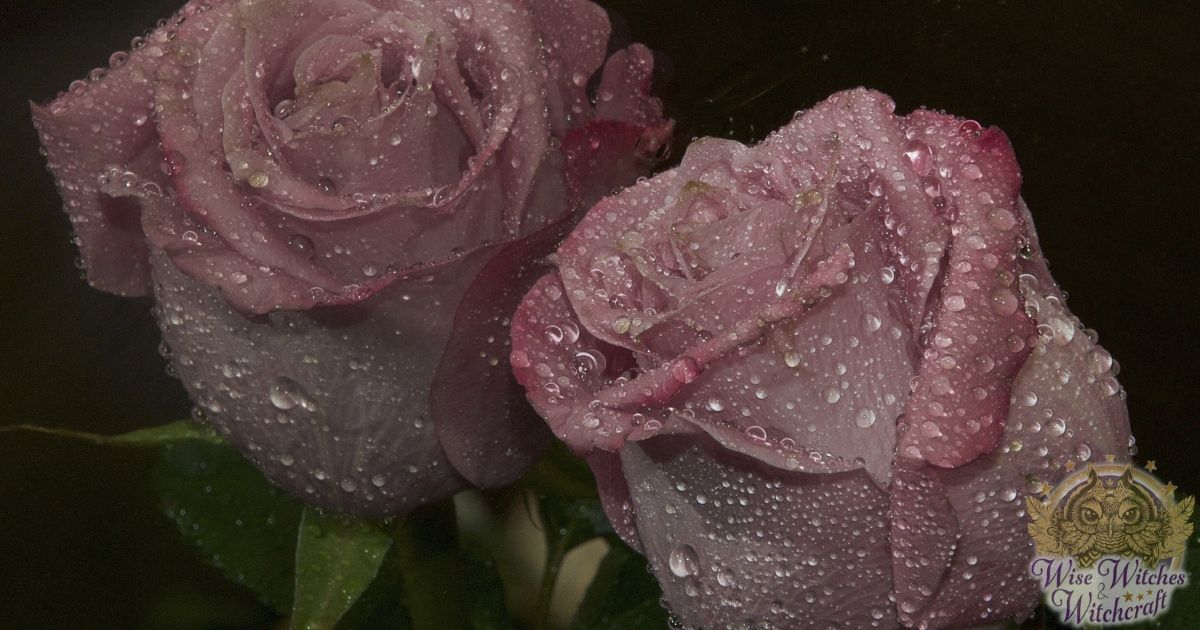
In examining the various stories about mirrors, you find hundreds of references to their meaning in dreams. Our dreams tell us much about humankind’s perceptions of−what we fear and what we honor. In turning to the world’s dream lore, we find that mirrors appearing in your dreams may be interpreted as follows:
- In Islamic tradition, this dream portends one of six things: a woman coming into your life, a girl coming into your life, rank, and dignity on the horizon, a new friend, a life or business partner, or good trade.
- In China, bright mirrors foretell of good fortune, a broken mirror indicates a broken marriage, and the gift of a new mirror indicates a son or daughter who will achieve great fame.
- A mirror is a metaphorical reflection of a specific port of your life that needs attention.
- A mirror represents the way you wish people would see you or a situation.
- Transformation is indicated, especially if the mirror breaks in the dream.
- Cloudy mirrors represent uncertainty.
- Covered mirrors symbolize some type of blockage (perhaps something in your past is haunting you).
- In Jungian psychology, mirrors represent something you’re unwilling to face in total truthfulness during waking hours.
- To see others in a mirror denotes that they will act unfairly toward you to promote their own interests.
- To see animals in a mirror presages disappointment and losses in fortune.
- Dream interpretation is very subjective. What a symbol means to you personally and what it means in a book can be two different things. Nonetheless, mirrors are one of those pervasive archetypes in our consciousness.
- Visit our sister site BuildingBeautifulSouls.com if you would like to learn more about the Language of Dreams.
- Breaking a mirror brings seven years of bad luck. Breaking the image was thought to break the soul seen therein or harm the indwelling spirit and bring about its ire.
- If you do happen to break a mirror, avoid the negative fate by washing the pieces in a south-running stream or bury them to avoid bad luck. Do not, under any circumstances, gaze into the pieces. This comes from the idea that mirrors hold the key to our future and breaking one can break that future.
- Covering a mirror in a thunderstorm keeps the house safe from lightning (the spirit of the storm). Similarly, cover a mirror after a death in the home. This closes the portal to the other world.
- Keeping a baby from looking in a mirror before the age of six months avoids a life of troubles, especially those caused by mischievous spirits that might come through the mirror and influence the child.
- A mirror falling and breaking on its own foretells of death or some type of ending.
- Placing a bowl and a shiny knife behind a door in your keeps away sorcerers because they will see their reflection and run away.
- Vampires have no soul; therefore, they have no reflection in a mirror. This idea ties into why not seeing your reflection in a mirror was said to predict serious illness or death and why Celtic women were often buried with mirrors to hold their souls firmly in place.
- Two people first seeing each other in a mirror before they date will experience a happy relationship [mirrors do not lie). If you wish to see the image of a future mate, eat an apple in front of a mirror and then brush your hair. Watch for on image to appear behind your shoulder (this ties into scrying).
- The reflection in the mirror is a projection of your soul. This concept was so strong that in eighteenth-century India women waved mirrors before Kali instead of performing human sacrifices and purportedly pleased the goddess nonetheless.
- Leaving a bowl of water on a grave keeps the soul in place, since its reflection will be captured in the water.
Mirror Omens and Signs
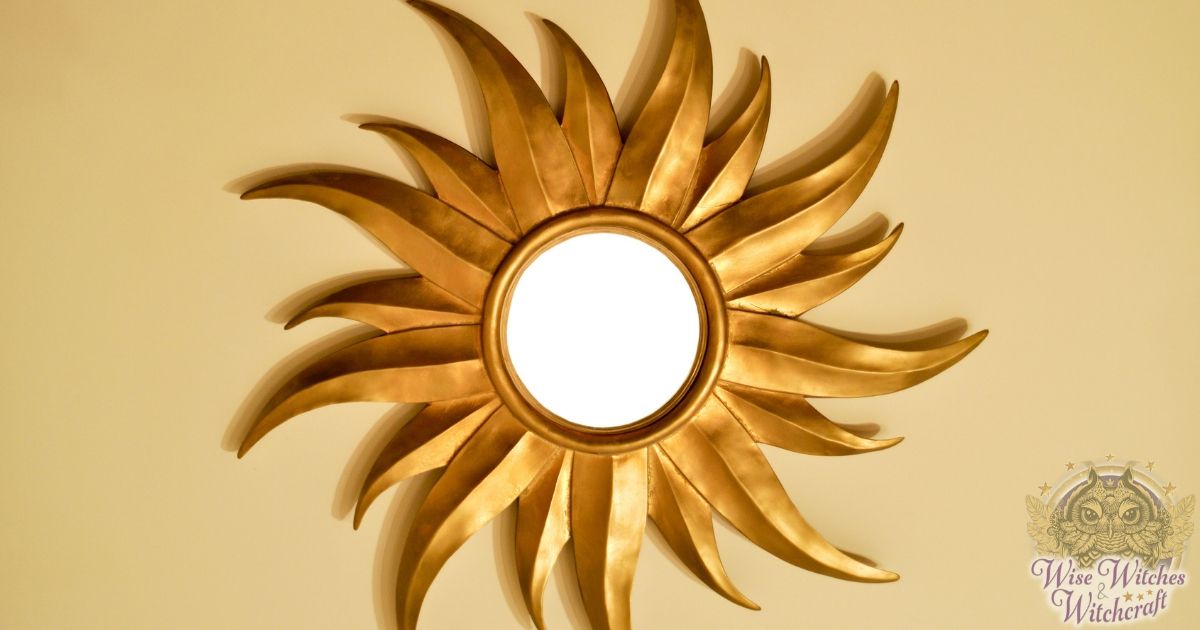
Myths substantially influence human thought and behavior. Folklore and superstition work hand in hand with those myths and influence us far more than we’re aware. These beliefs are often huge repositories for magickal traditions, having been a safe place to hide witchery when the general atmosphere for these arts was dangerous.
Some of the folk beliefs and traditions surrounding mirrors are more easily understood when we examine the language of a people. For example, when you realize that the Egyptian term for “mirror” meant “life,” and that in India the Great Goddess was called the Mirror of the Abyss, it becomes much clearer wily mirrors were valued and credited with all types of magickal attributes in those settings. Let’s take a quick look at some of Mirror folk beliefs:
If we look at superstitions more closely, they give us a lot of clues about how to begin tapping into magical processes, such as:
- Covering a mirror to close the lines to other realms or specific energies.
- Turning a mirror toward or away from something or someone
- Reusing the parts from a broken mirror to transform a negative into a positive
- Placing a mirror in a sacred space as an offering
- Applying a mirror as a charm (especially for true seeing and relationships) and gazing upon it to see the future
That’s a lot to reflect on!
Based on the “Little Book of Mirror Magic,” by Patricia Telesco. All Rights Reserved.

